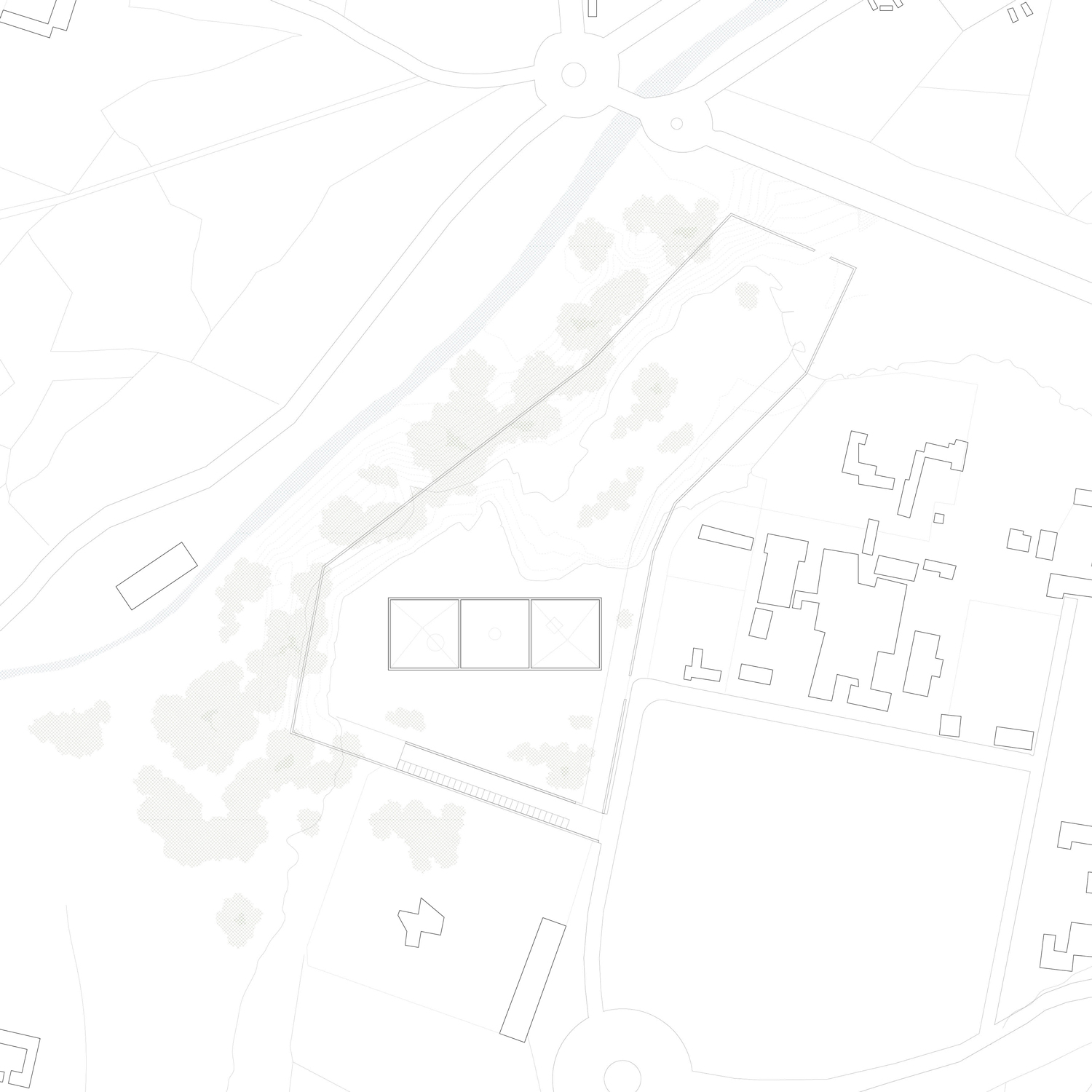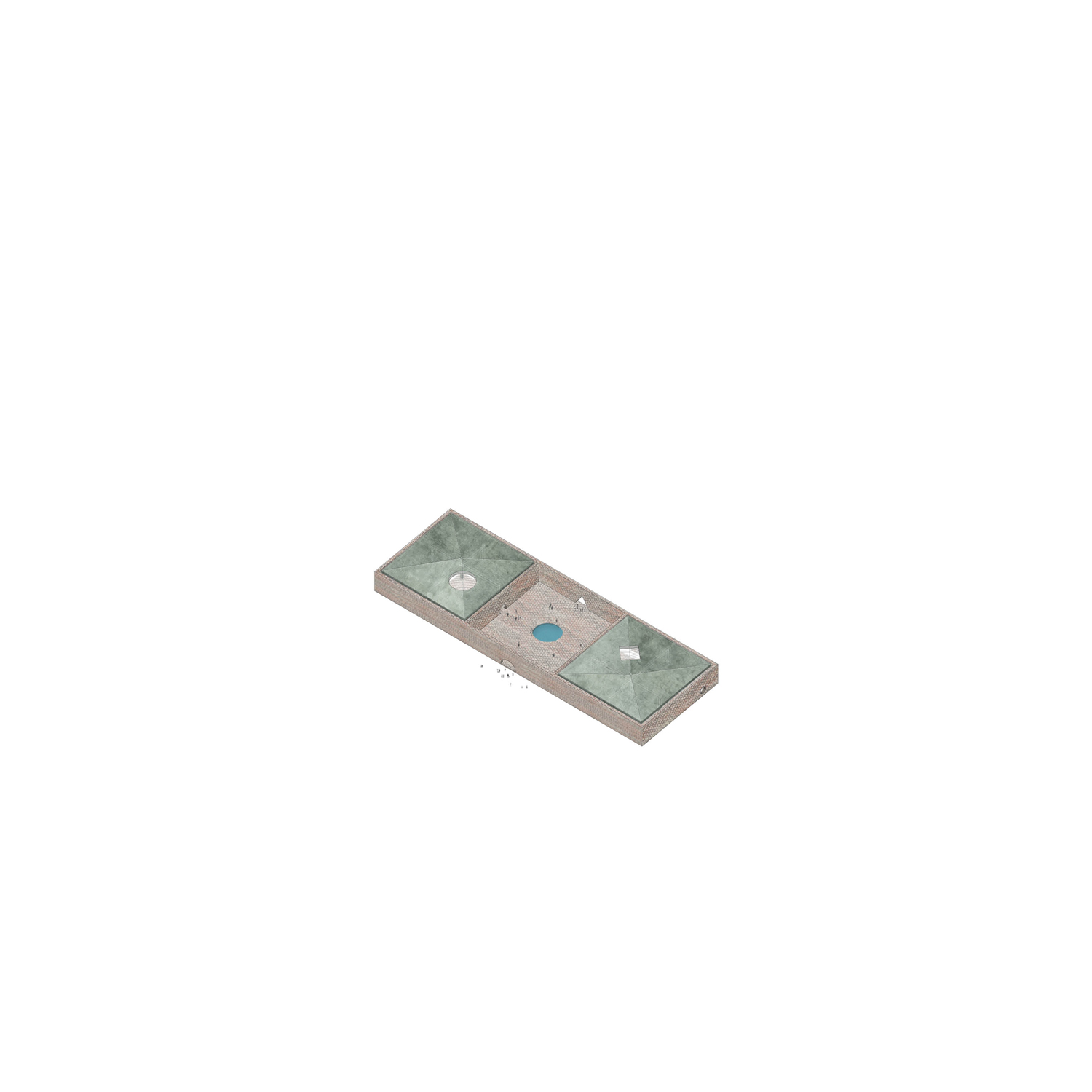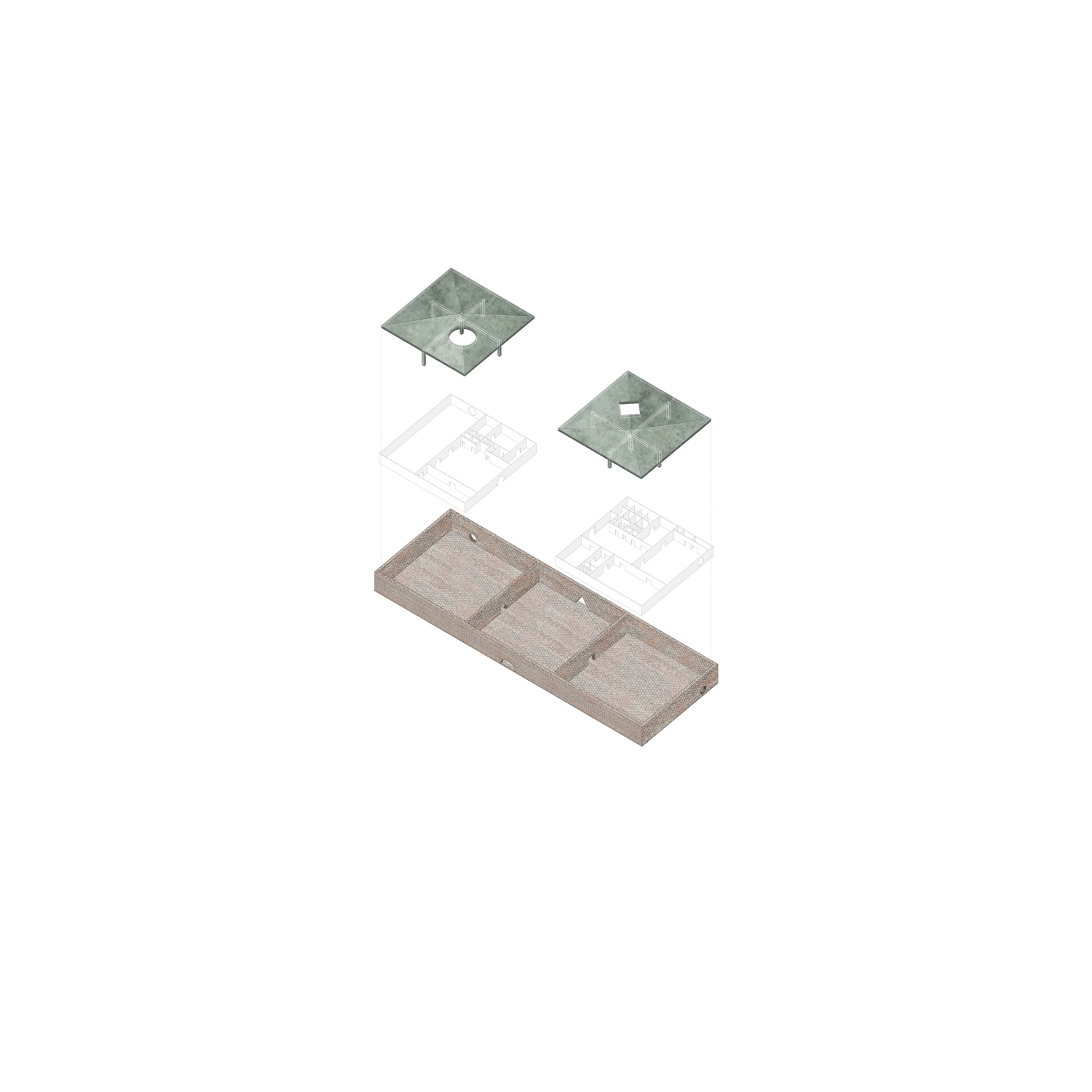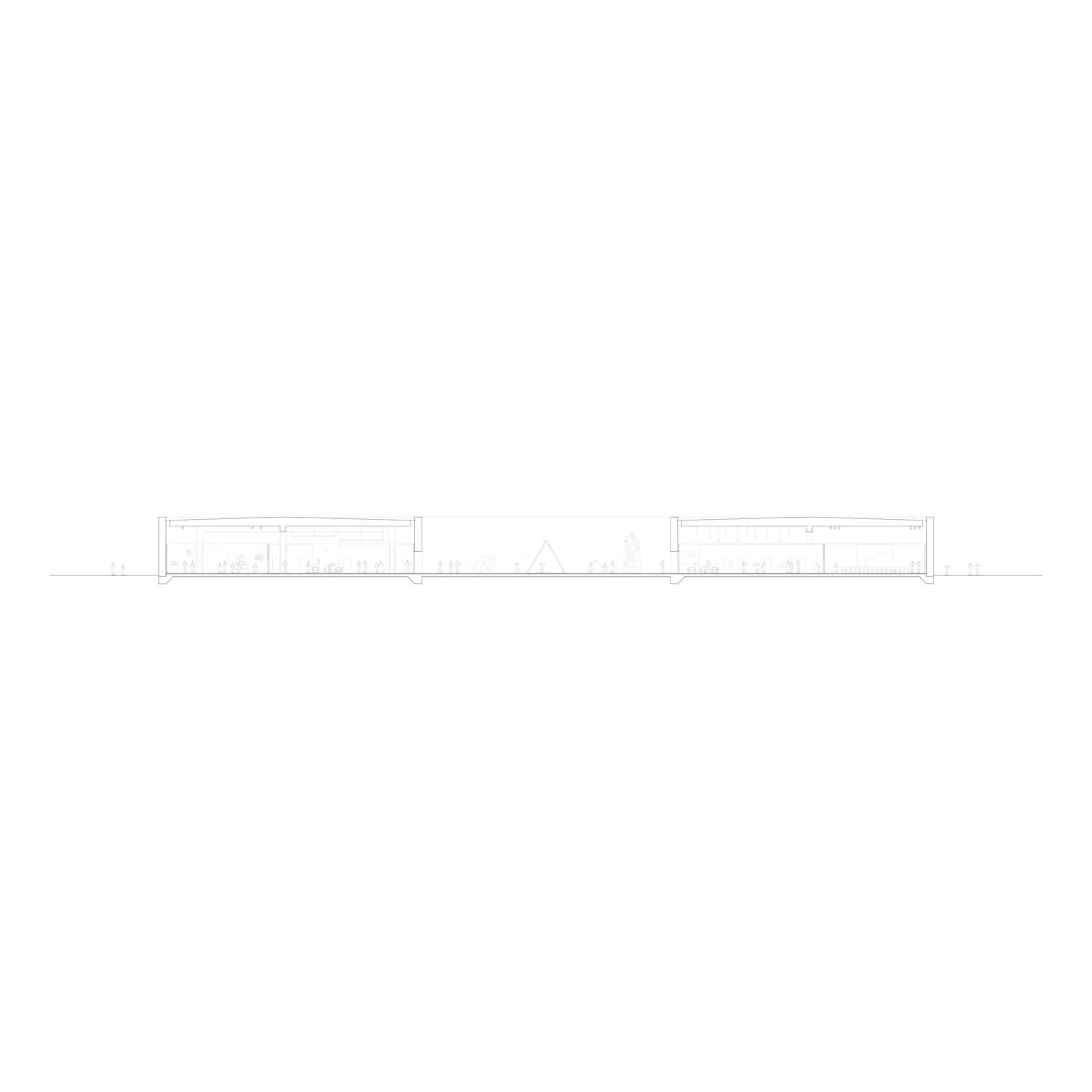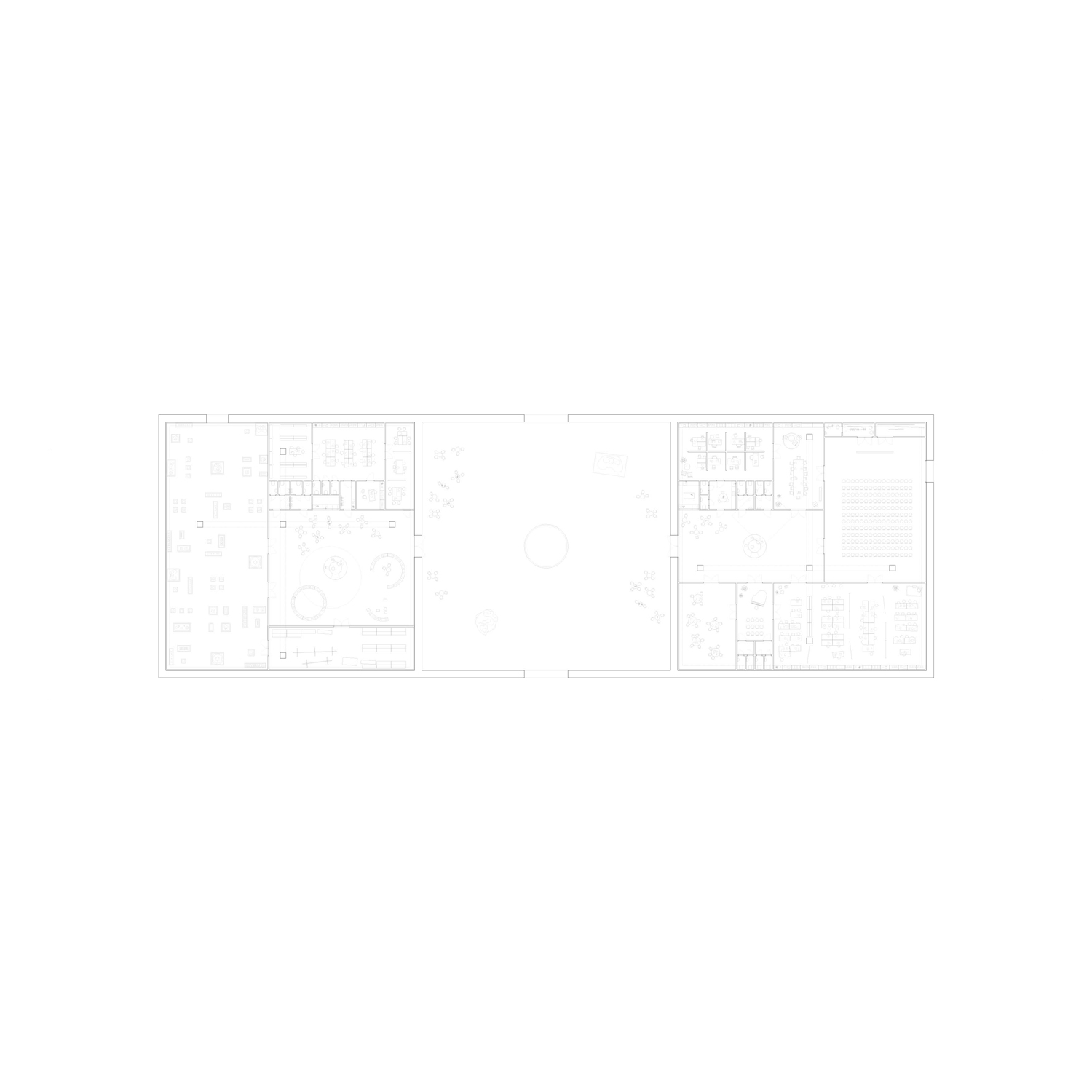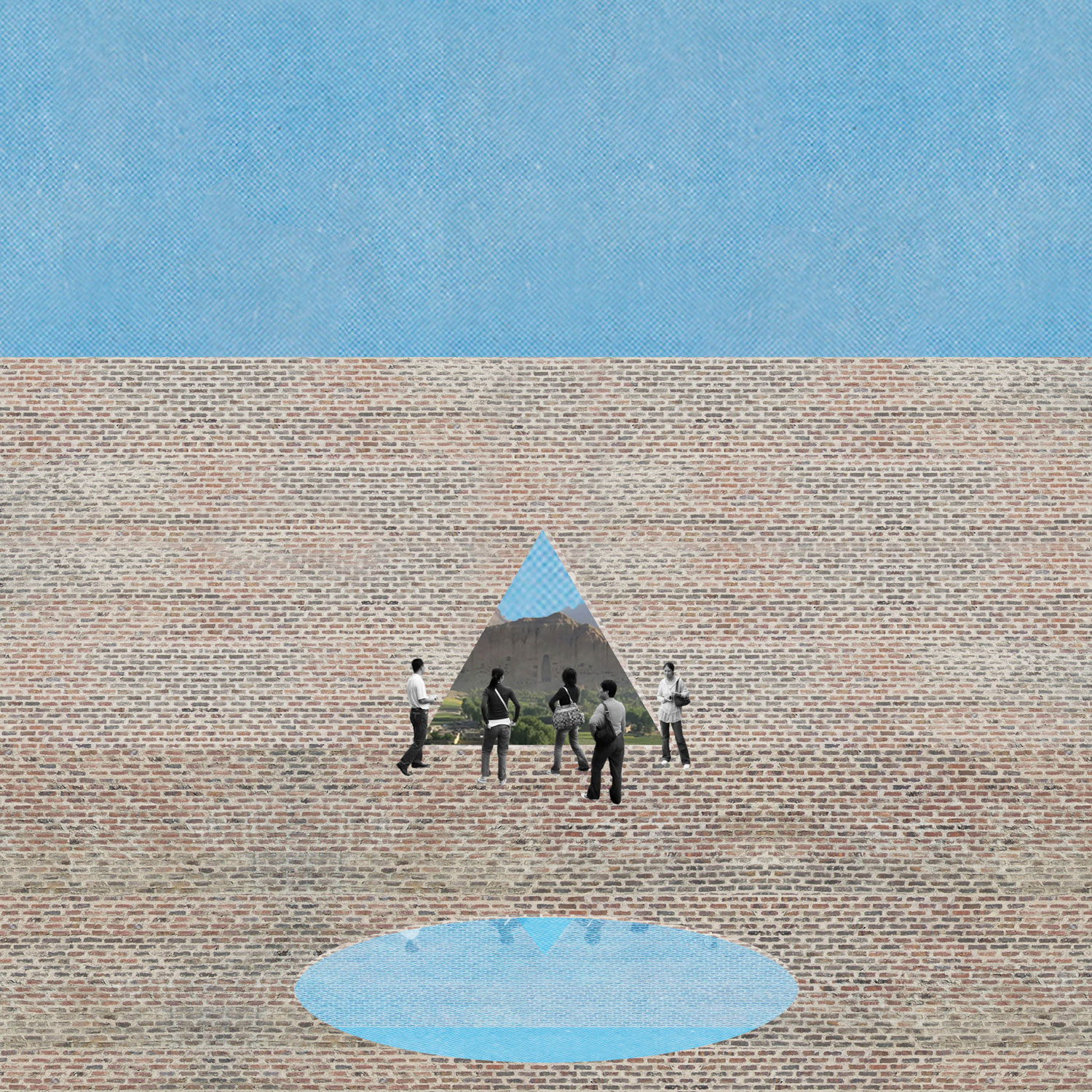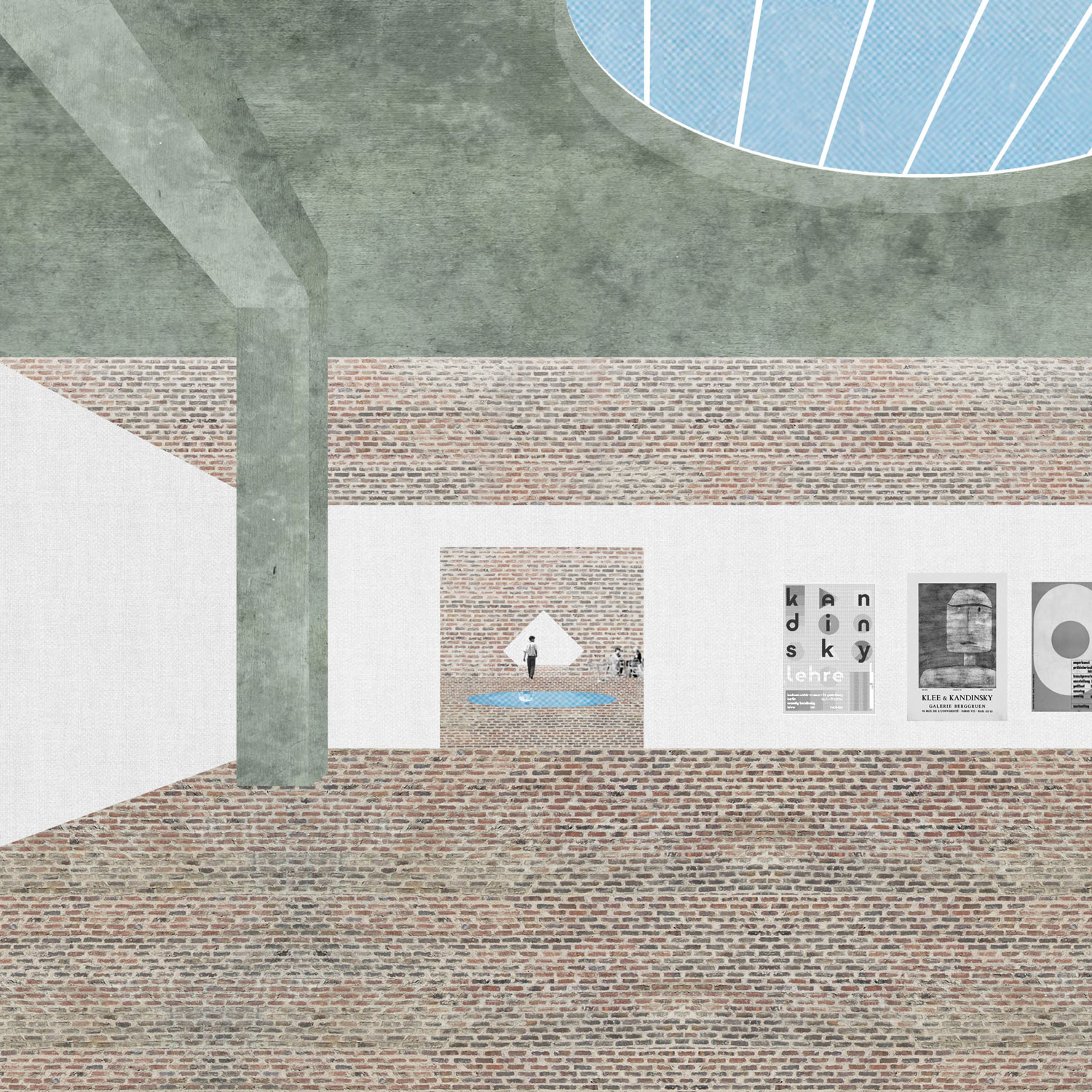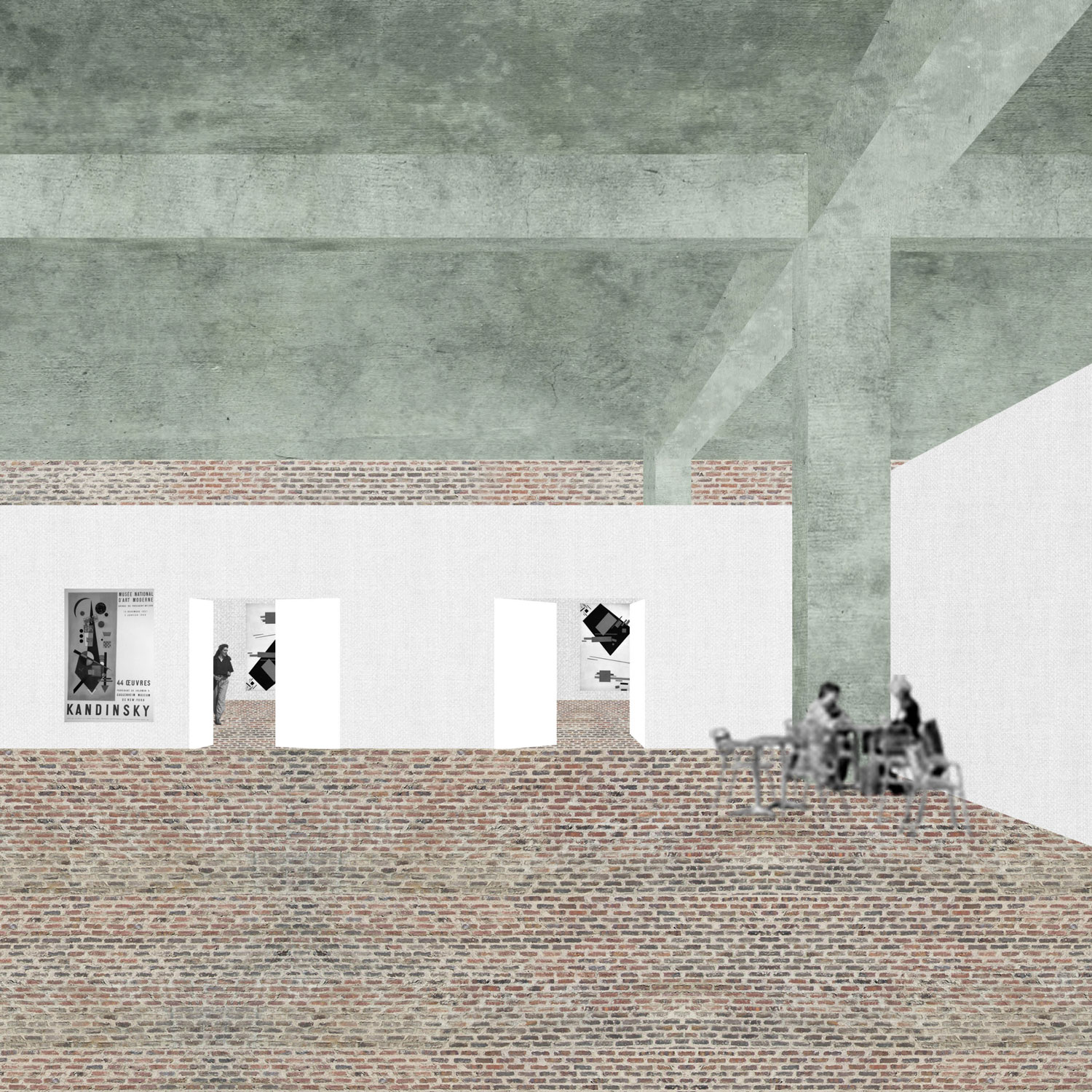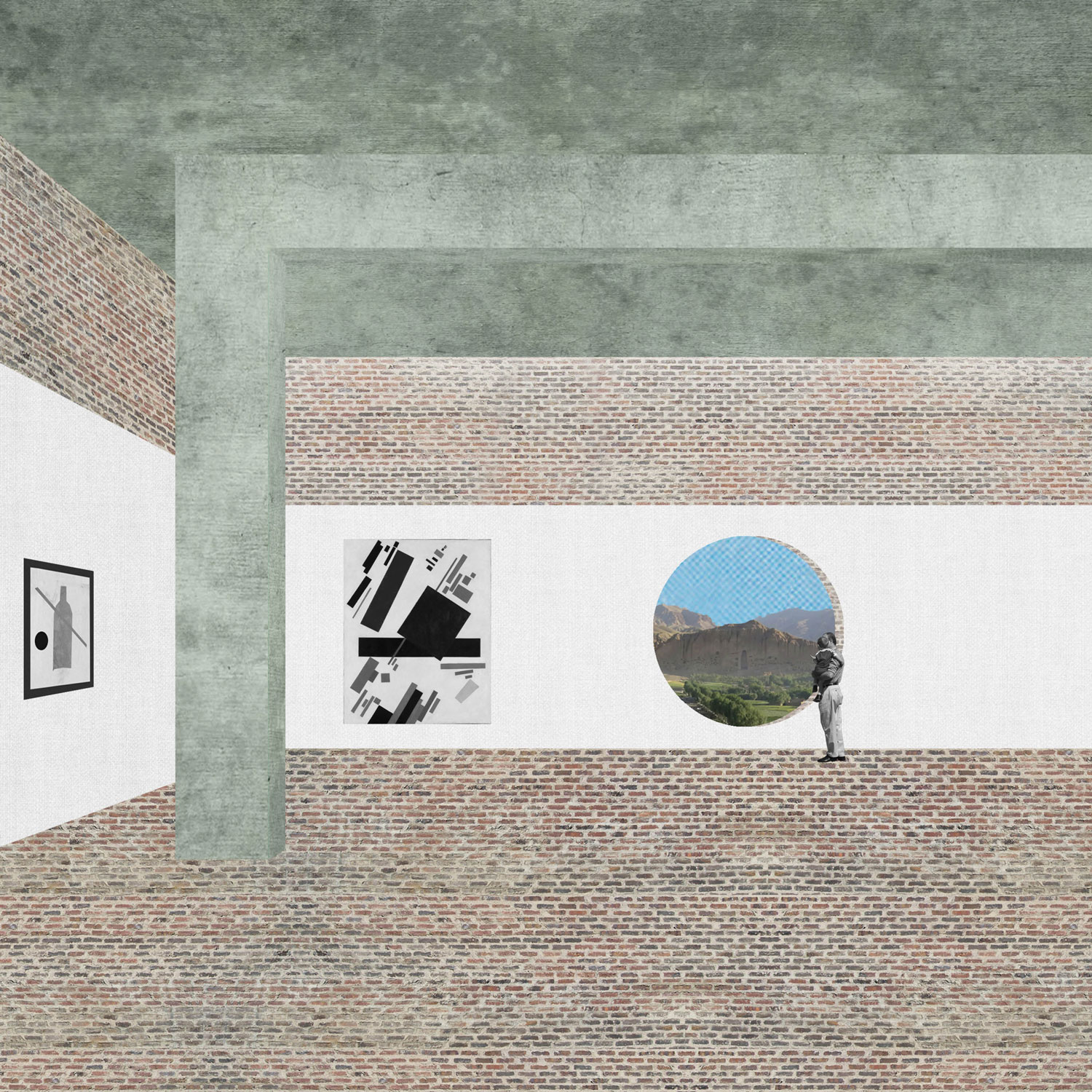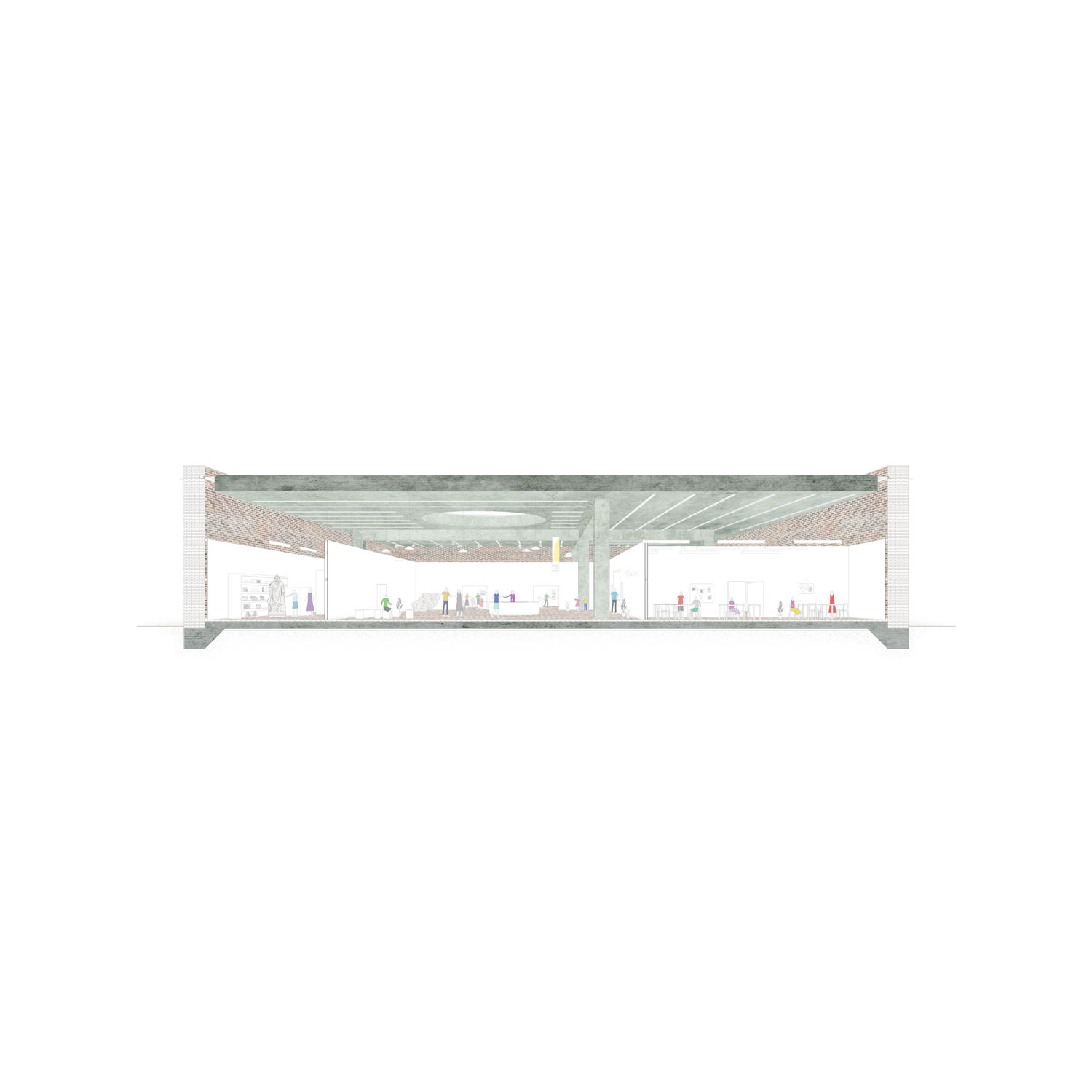1114-FAL-BIM.AF-2015
Clients: UNESCO, Ministry of Information and Culture of Afghanistan
Status: Competition (2015)
Location: Bamyan, Afghanistan
Climate: Desert / arid, Hot
Material: Brick
Environment: Desert
Visualizer: Studio
Scale: Medium
Types: Cultural, Cultural center
The project for the Bamiyan cultural center represents an exceptional opportunity to establish a space dedicated to culture and arts in the Afghan landscape. Taking this as a starting point, our project is in equal measure a design for a building and the conception of a universe; an entity both extremely unique and extremely diverse. As such, it shall become a platform that allows exchanges between the different cultural, educational and recreational activities envisioned. A resilient and democratic building, highly flexible but never fragile. The project avoids attempting to invent ‘new forms or typologies’, focusing on the presence to familiar ideas.
A simple but monumental brick wall defines the perimeter of the building, cutting an elegant silhouette on top of the cliff, similar to the ones of the local vernacular architecture, only standing out by its exceptional proportions and openings. Once inside the wall, a courtyard serves both as symbolical heart of the building and as a mean to create a strong link with the gardens. In the same axis as the entrance, one finds a monumental opening to the view of the Buddha Cliff. The two lateral sides accommodate the entrances to the various programs.
Constructing democracy
Past the entrances, the richness and complexity of the project are revealed. The roofs are made of dyed concrete slabs supported by a majestic concrete structure and cut to allow for generous skylights. The separations between programs are made of common gypsum drywalls which can be modified according to the future needs of the cultural centre. Because of the lower height of those white drywalls, all three main elements of the project remain always visible from the inside (perimeter wall, concrete structures and white drywalls). The experience of the interior spaces is therefore mostly defined by the dynamic interplay between those elements.
This spatial and constructive system aims to be transparent and understandable to anyone. All of its elements are whole and visible, but they still work together to establish a harmonious construction, far beyond its physical appearence. Each visitor is offered the perception of a democratic universe of programs, all under the same roof, all under the same light.
